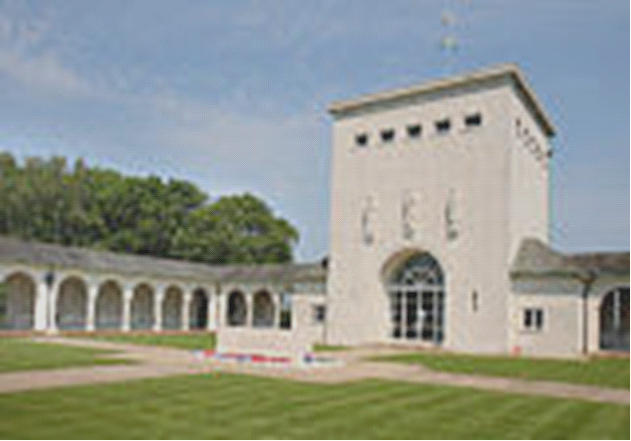





13. The Rectory
The Rector was Canon Edward Daniell O.B.E. He had been a missionary in Uganda for 32 years before becoming Rector of
Litton. He agreed to pay his predecessor an annuity of £500 per annum, out of an annual income of £800. He also had to borrow
money to improve the Rectory, and this was only paid off in 1952.
In 1939 Edward was living here with his second wife Ellinor. Also living here were Clara Daniell, a retired head mistress, Victoria
and Ellinor Austin, a student, Rosa Oliver, a nurse and Cathleen Oliver, a chiropodist. Thomas Pile was employed as a gardener
and lived at Rectory Cottage with his wife Mary.
The Rectory barn was requisitioned for use in the war.
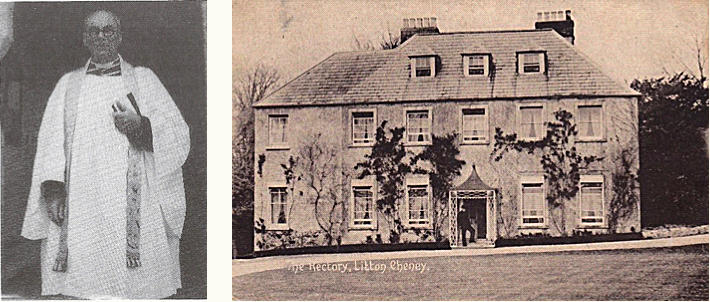
Belinda Brocklehurst recalls every summer there was a village fete to raise money for the war effort. This was held in the Rectory
Garden and was great fun. Canon Daniells was the rector of Litton Cheney. Lots of stalls, homemade clothes, jams etc for sale,
games and raffles. One year someone presented a lovely opal pendant with a diamond and sapphire drop and white gold chain. It
was in a box lined in blue velvet and I thought it was the most beautiful thing I had ever seen. It was to be auctioned and to my
amazement my grandfather bought it for £250 and gave it to me, it is still a treasured possession. The money he paid went
towards the ‘war effort’.
The fete in 1940 was held in the Rectory Garden on 11
th
May from 3 to 7 pm, admission 6d and 3d, men in uniform free. Dancing
was held in the barn from 8 to 10 pm, admission 6d. The Fete realised a sum of £28 13s 6d and £5 14s 8d (20%) was handed to
the Red Cross.
The fete in 1941 was held in the Rectory grounds on 2
nd
August from 5 to 8 pm, admission 6d. Dancing was held in the Sunday
School from 8 to 11 pm, admission 6d. The Fete produced £31.
The fete in 1942 was held on Saturday 23
rd
May, being a very wet day. There was dancing from 8 pm, admission 6d. A profit of
£22 12s 6d was made and as arranged 10% of this was handed over to the Church Missionary Society and the remainder for
church expenses.
The fete scheduled for 12
th
June 1943 (for church funds, with 10% to overseas missions and 10% to China Red Cross) was
cancelled.
In 1944 Edward Daniell conducted one of the fortnightly religious services being broadcast for English-speaking Africans.
Carson Carysfort Proby, the nephew of Canon Daniell’s second wife Ellinor and the son of Frank and Luva Proby of Vancouver,
Canada. During the war he was a Flying Officer in the Royal Canadian Air Force. He died on 22
nd
October 1941, aged 27 when
Catalina AH566 was shot down by a German Blum & Voss 138 Flying Boat northwest of Molde, Norway. His body was never
recovered for burial. He is commemorated at the Royal Air Force Memorial at Runnymede.
Royal Air Force Memorial at Runnymede
14. The Parade Ground
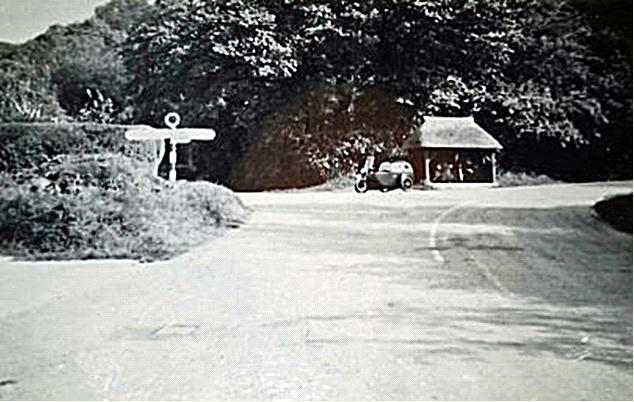
Jubilee Hut and Parade Groun
The wide road area in front of the Jubilee Hut was often used as a parade ground for military units stationed in the village. The
Hut was built by the village in 1935 to commemorate the 25
th
anniversary of the Coronation of King George V.
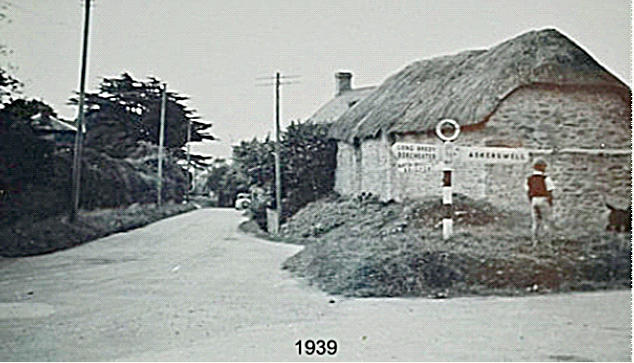
15. Court Close/Cricket Pitch
Litton had a very active cricket team right up to the start of World War Two. A game in 1938 saw Litton lose to Charmouth by 18
runs. Scores: Litton (J. Wakely 13, L. Legg 12) 65, Charmouth 83. M. Toms was the best bowler of the day taking seven
Charmouth wickets for 19 runs. Wakely took 2 for 20 and Legg 1 for 16.
George Iceton of the Durham Light Infantry, stationed here in 1940 recalled I seem to recall that in the centre of village there,
Litton Cheney, I think there was a Vicarage. Certainly, there was some land down in the centre of the village on the left-hand side
going south and in there I think there was a cricket pitch, certainly a sports field, because I remember doing something in there at
midday, probably a village fete or something like that was held there and there was a certain amount of sports and some boxing.
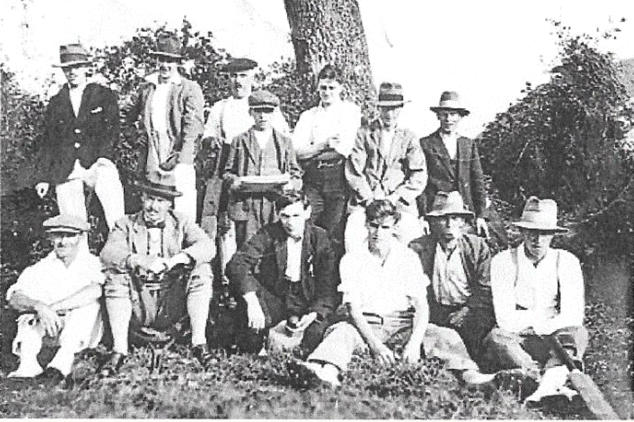
Litton Cricket Team in the 1930s
The Durham Light Infantry were stationed here in 1940 and formed a Battalion cricket team. William Watson recalled we had a
quite remarkable cricket team, and we would have played a great deal more cricket in the neighbourhood. Now we had in that
cricket team, really quite remarkable, one of the better Battalion cricket teams in the whole of the British Army.
Leslie Proud who played cricket for Charterhouse and Oxford. We had His brother Bill Proud who played cricket for Winchester,
Hampshire and Cambridge and subsequently captained Durham. We had Mike Ferrant who was no mean cricketer, we had Peter
Jefferies, a reasonably good cricketer, we had Frank Robson, our Quartermaster who played for Northern Command, and we had
a fellow called Burrows who played for Somerset, and we had Bandsman, Sergeant Fairley who played for Crook, he poor chap
was killed with me in the Alemein line, another chap called Tom Black. Well, there’s the making of a brilliant team. Had we had
time we would have gone all around Dorset playing cricket. We played the Williams’ side at Bridehead, Littlebredy and beat them
very handsomely. We played Dorchester and they had Rev Jessop, who was son of Jessop, the great cricketer, and it looked as if
we were going to be slogged to pieces by young Jessop. Peter Jefferies caught a brilliant catch and that was the end of
Dorchester. And we could have gone on playing. We played also, I remember we played a Girls Secretarial College from London
who were billeted somewhere in the neighbourhood on the local pitch and the first-class team of ours had to play left-handed with
broom sticks and only field with one hand. We tried all we could to reciprocate for what the kind people of Dorset were doing for
us. We played Littlebredy on the very day that Hitler said he would be in London. It was just one of those superb sights, village
cricket in a most beautiful ground, and a glorious hot summers day, and we all sat in deck chairs all round watching, and had tea
there, the Williams supplied the tea, and then they provided the drinks afterward. One could have done such a lot, but we really
didn’t have the time.
The Cricket team, the famous cricket team, which of course, had it been the days of peace we would have had an absolutely
marvellous time, with everybody joining in, we’d have had that cricket team going round the whole of Dorset and Devon probably.
It was such a good cricket team.
16. Cross Tree Farm
Cross Tree Farm comprised 216 acres of pastureland with a small proportion of arable, a farmhouse, buildings and two cottages.
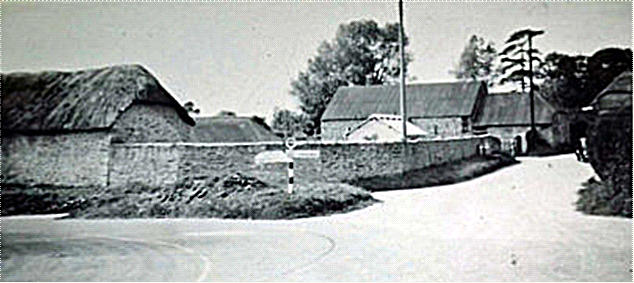
Cross Tree Farmyard and Buildings
The buildings and yard were used as workshops and stores and a general assembly area in the war. The Foot family continued to
run Cross Tree from their other farm in Long Bredy. General Eisenhower, the Allied Commander in Europe visited in 1943, when
he decorated men who had come back from the invasion of Italy, with the investiture in the farmyard. For security reasons this did
not become generally known until after it had taken place.
Two brick and timber ex-Army huts were still in use by the farm when it was sold in 1956.
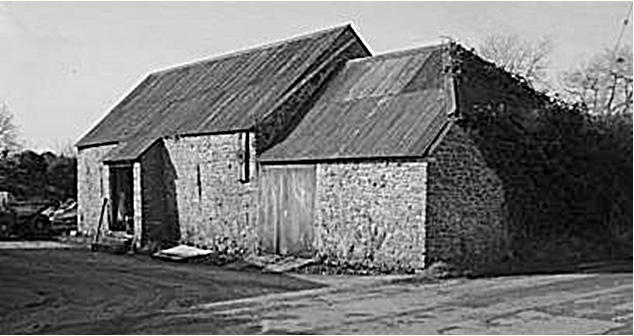
Cross Tree Farm barn
17 The Police House
Reginald Trevett was the police constable from 1939 to 1943, living here with his wife Hannah and son Herbert, an assistant
gamekeeper.
Charles Baumber recalled that before Anthony Eden had finished his broadcast (May 1940) I had enrolled in the LDV (Local
Defence Volunteers) at Litton Cheney Police Station, which P.C. Trevett can verify. I served throughout the war under the
command of Colonel Duke of Martinstown, with Lt. Colonel Newman as platoon commander, and I did not miss a parade or guard
for three years and then it was owing to my daughter’s illness. After her death I continued parades and beach patrols as usual.
Also, when we were expecting the invasion of our part of the coast and when “Jerry” used to come overhead with hundreds of
planes bombing and machine-gunning. I carried a rifle or Browning automatic to and from work for two years with full magazines,
ready for a low flying “Jerry”. When the Home Guard were stood down, I held the rank of corporal.
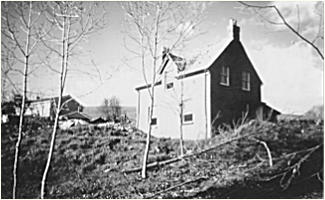
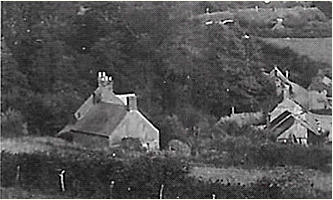
The Police House prior to demolition
Old cottage with Police House behind.
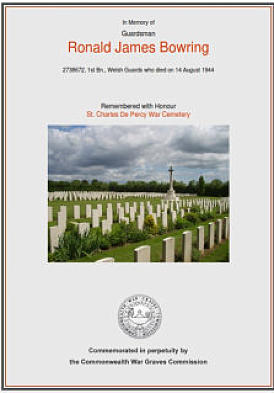
In March 1944 PC Bowring transferred from East Stour to Litton. His son, guardsman Ronald Bowring, aged 19 was killed in
August 1944 while on patrol with the Welsh Guards.
18. YMCA (Old Chapel)
The Methodist chapel had gone out of use by 1939, and a general village meeting was held to consider buying the chapel for use
as a village hall. During the war some American soldiers of I Company of the 3
rd
Battalion were accommodated at the Chapel. It
had an extension which served as a canteen.
Belinda Brocklehurst recalls my grandmother ran the YMCA for the area and started a thriving canteen in an old disused chapel.
The soldiers, first British and then American, who were stationed in the village, spent much of their free time there. They called me
Blondie and I was allowed to spread margarine on slices of bread, providing I spread it very thinly, for making succulent
sandwiches out of scrambled powdered egg and watercress, which we collected from the bubbling chalk streams flowing through
the village.
My grandmother took over a small unused chapel and started a canteen for the soldiers stationed near the village. It was supplied
by the YMCA and run by Mrs Harper with the aid of several village ladies, and an orderly supplied by the regiment. There was a
counter where sandwiches were made, a huge bread slicing machine, margarine, dried egg powder, which made bearable
scrambled eggs, extra supplies of sugar so jam could be made, and my grandfather somehow got more kippers sent down from
Scotland. The Americans had never seen them before and I remember looking on in astonishment as one soldier picked a kipper
up by its tail and steadily munched up the lot, bones and all. My war effort was spreading margarine on the bread, and I was very
fed up as I was not allowed to use the bread cutting machine. There were quantities of very black tea, and tables and chairs, the
soldiers loved coming to the canteen, and sometimes there were special parties, and dances in the evenings (which I did not go
to!).
Also, at this time my grandmother was supplied with a sweet American soldier called George as her orderly for the canteen. He
became a real friend of the family, and we all loved him.
My mother worked for the YMCA driving a large canteen van. This was all voluntary, and involved a lot of other local ladies, one of
which was a bridesmaid at The Queen’s wedding. My mother had to go to Dorchester to pick up the daily stores, drive to various
army camps and with the help of another lady make piles of sandwiches, cups of tea and warm up sausage rolls for the troops.
Occasionally I was allowed to go too and ‘help’, I loved doing this as the soldiers got supplies of Mars Bars and Crunchies,
something we never saw, and sometimes one of them gave me one! I was always known as ‘Blondy’, because of my very blond
locks! I think this nickname may have started when the Americans arrived.
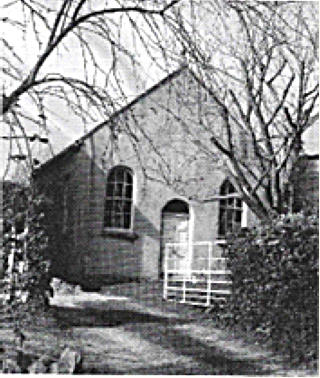


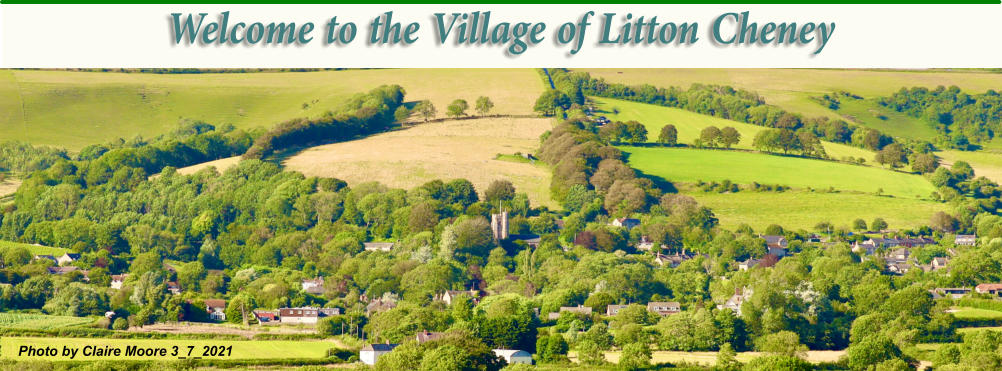






ABOUT LITTON CHENEY

LITTON CHENEY IN WARTIME





























